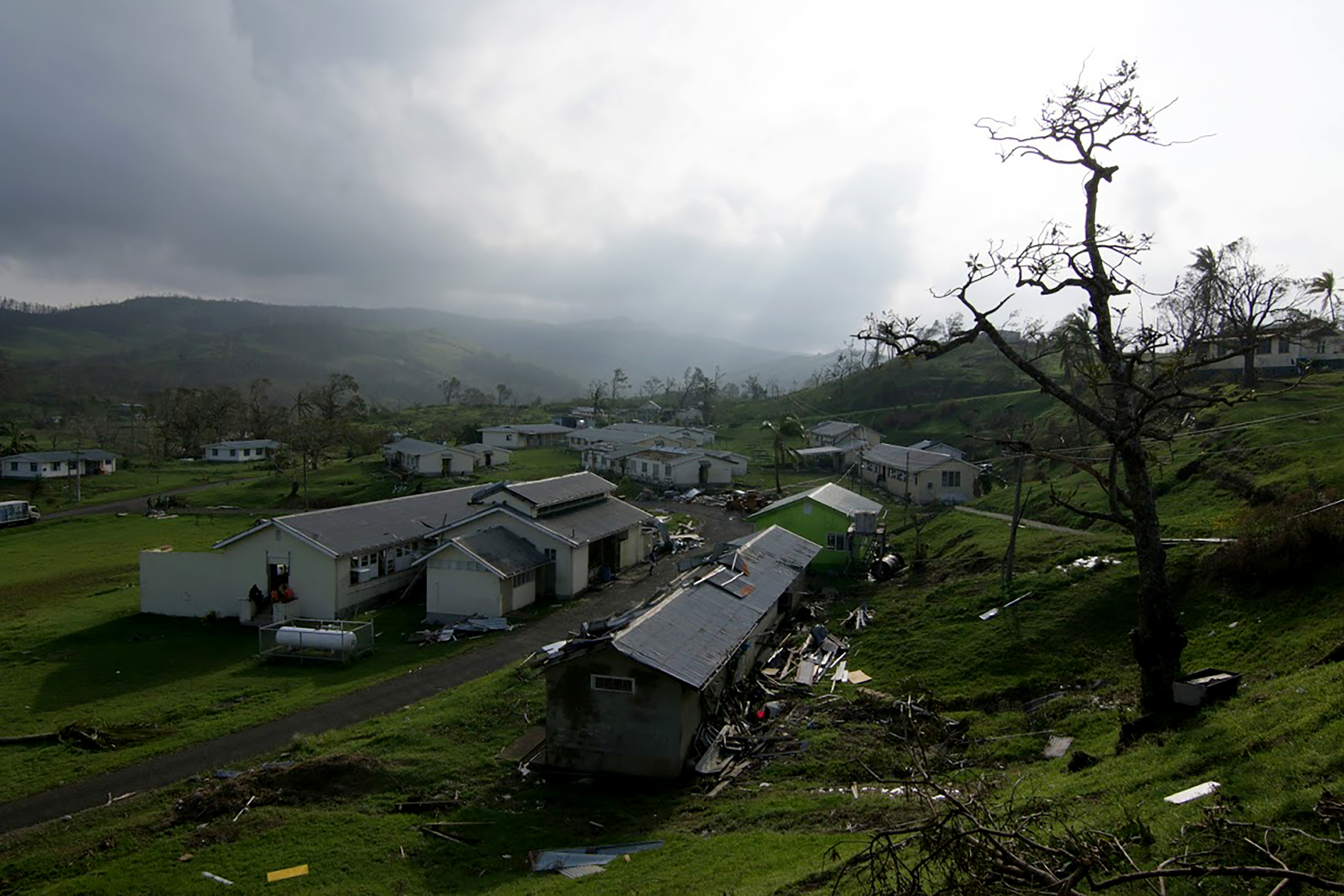

(Photo: Steven Saphore/AFP/Getty Images)
The rain finally arrived in Western Fiji during the first week of November. The deluge lasted several days, but it was not yet enough to relieve the severe drought that has stressed the region’s agricultural sector, according to Pradeep, a 49-year-old farmer in the hills of Nadi.
I come upon Pradeep guiding two steers across the dirt road that leads up to his house on one peak in the rolling hills above the low-lying city center. To our left, dark clouds drop sheets of rain over distant hilltops; to our right, a small brush fire has ignited, and the wind blowing ahead of the approaching rainstorm whips the smoke up in spirals.
Click here for more on Fijians’ everyday climate struggles.
Pradeep, like his father before him, grows sugarcane—the backbone of Fiji’s economy. One of the island nation’s largest employers, the sugar industry accounts for up to 15 percent of Fiji’s gross domestic product (GDP) and up to half of the agriculture industry’s GDP. But sugarcane in Fiji is almost entirely rain-fed, which means production levels depend heavily on the weather.
Pradeep’s family has farmed this land for at least 60 years. In the minutes before the rain reaches us, he tells me it will be months before his sugarcane crop recovers, and that he desperately needs a water pump to get whatever water remains in the streams and creeks in the valleys up to where he plants.
While crops may still be suffering, a new type of grass has flourished in the days since the rain began, painting the dry, brown landscape green. This new grass spreads farther and wider every time it floods, Madhwan, a 61-year-old goat farmer, tells me, and his goats won’t touch it—it’s covered in tiny thorns. Apart from tourists, Madhwan, whose farm sits halfway between Nadi and Lautoka, may be one of the only people in this region who truly prefers the dry season.
Atu Vuniyayawa, who owns this land and leases it to Madhwan, has brought me here with his wife to meet Madhwan, who is slight with a gray-streaked mustache; Madhwan estimates his herd at roughly 300 goats. Vuniyayawa and his family visit the farm every year for Diwali, the Hindu festival of lights. We sit down in plastic chairs on Madhwan’s stone patio off the kitchen, where we can watch his goats mill about in their pens on a rocky outcrop across the driveway, and Madhwan’s wife hands me a mug of instant coffee and a plate of roti and okra fried with Indian spices. As I eat, Madhwan explains that the goats don’t like the wet season either. They huddle together in their pens during rainy weather, moving and eating sparingly. In the dry season, their appetites return. The hot weather also makes the goats drink more water. That, coupled with the fact that dry grass has a higher protein content, leads to heftier goats for the farmer who sells the animals based on weight. But the rainy season is becoming longer, according to Madhwan. “It was three months rain,” he says; “now it’s four, five, six months.”
The flooding is worsening as well, he says. The really bad floods used to come every three or four years; now they happen every year. He watches the main road below his home on the hill flood at each high tide. “I’m worried the time will come [when] all will be water,” he says. “I read in the newspaper in 1982 that [by the] 2080s the sea will rise three meters. Sixty years, and this will be all under water.”


